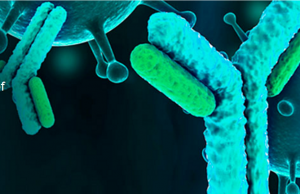 Traditionally, the pharmacokinetic profile of biotherapeutics such as insulin glargine, adalimumab, trastuzumab and others, used gold standard LBAs to assess dose-response during drug discovery and development. However, LBAs require a specific antibody reagent to be developed for each mAb variant, a process that is often incompatible with the compressed timeframes encountered during the initial stages of drug development. More recently, LC-MS/MS-based methods have come to the forefront as a feasible approach for the quantification of biotherapeutics in biological matrices, with many of these methods relying on proteolytic digestion of the target mAb and quantification of multiple unique signature peptides, which are equivalent to levels of the whole protein. But, to drive the real biological need, we have to quantify the pharmacologically active or free form of the drug to assess safety, efficacy and proper dosing regimen. Here we present a solution to get the best of both technologies: an LBA strategy to capture the active form of the drug; and an LC-MS assay to selectively quantify the free and circulating drug.
Traditionally, the pharmacokinetic profile of biotherapeutics such as insulin glargine, adalimumab, trastuzumab and others, used gold standard LBAs to assess dose-response during drug discovery and development. However, LBAs require a specific antibody reagent to be developed for each mAb variant, a process that is often incompatible with the compressed timeframes encountered during the initial stages of drug development. More recently, LC-MS/MS-based methods have come to the forefront as a feasible approach for the quantification of biotherapeutics in biological matrices, with many of these methods relying on proteolytic digestion of the target mAb and quantification of multiple unique signature peptides, which are equivalent to levels of the whole protein. But, to drive the real biological need, we have to quantify the pharmacologically active or free form of the drug to assess safety, efficacy and proper dosing regimen. Here we present a solution to get the best of both technologies: an LBA strategy to capture the active form of the drug; and an LC-MS assay to selectively quantify the free and circulating drug.
| ELISA / LBA | LC-MS |
| Low LOQ (trade off with selectivity) | Faster and cheaper development |
| High throughput | Multiplexing possibilities |
| Lower equipment costs | Internal standards reduce assay variability |
| Limited linear range and complex calibration | More selectivity |
| Non-specific binding | Simultaneous Quant and Catabolite ID |
| Cross-reactivity with ADA’s | Medium throughput |
| Higher development time/cost | Measures total drug and its metabolites/catabolites |
| Measures only free drug |






 Contact Support
Contact Support
0 Comments